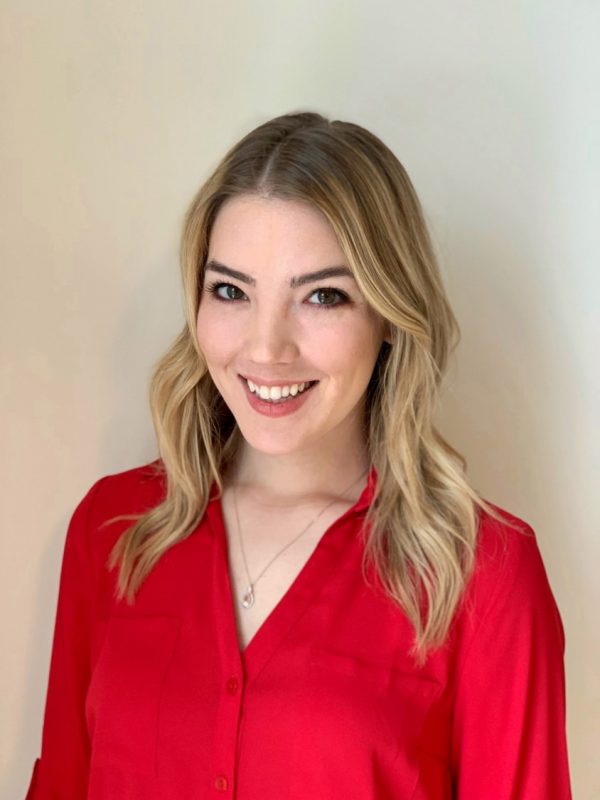Meet Stacy Schkoda
Tell me a little about yourself!
My name is Stacy, and I am a fourth-year toxicology PhD student in the Biological Sciences department working with Dr. Heather Patisaul. For fun I enjoy baking artisan breads (my favorite to make is garlic herb focaccia), volunteering with local animal rescues, or practicing yoga. Long term, I see myself continuing research in either a university, clinical, or government associated laboratory

I am working with the Xradia 510 Versa X-ray microscope (nano-CT) to make quantitative and qualitative assessments of bone. It is truly a state-of-the-art instrument which can capture the smallest details in high resolution. Because we can distinguish microstructures on a sub-micron scale, we can make more accurate biological conclusions than previously possible. It is humbling and exciting to see my work in a new context through the nano-CT, and I enjoy working with the instrument and the advanced imaging software. In the future I hope to include other instruments at AIF in my study to characterize bone more fully.
What have you been researching and how is it impacting the community?
Most commonly, the public is exposed to the field toxicology through media like CSI or high-profile celebrity events, but at its core toxicology is the relationship between chemical exposures and biological outcomes. For my thesis I am looking at how chemicals used in flame retardant manufacturing (exposure) influence bone development (outcome). Flame-retardants affect many biological processes like hormone signaling, fat storage, and recently skeletal development. While we may not think about it as often as other parts of the body, like if your stomach is grumbling for garlic herb focaccia bread, the skeleton is a dynamic, interactive system and is fundamental to structural and chemical integrity. The skeleton replaces itself about only once every ten years, so it is important to keep this internal support system as healthy as it can be.
Flame retardants are complex mixtures made up of many individual chemicals most frequently detected in polyurethane foams, fabrics, and baby products. Previous work in the field has led to safer products and has given consumers more choices in their personal health through labeling laws and a wider range of select chemical-free products brought to market. Early development is a very sensitive period, and there is a collective concern about how early life exposure mediates effects seen later in life.
By studying these ubiquitous chemicals in the context of bone development, my research expands our knowledge of what constitutes an osteo-toxicant and ultimately aims to create safer spaces for human and environmental health.
What have you learned from your experience at AIF?
I appreciate the learning experiences AIF provides through online workshops, short courses, and town-hall style forums. Every step of the process from planning experiments with staff, learning theory and principles behind the technology, and operating instruments has allowed me to build my skillset and establish myself as an independent researcher. I am able to ask more meaningful questions about my science by building upon what I have learned to advance my work further. Ultimately, I have learned a newfound confidence in an initially unfamiliar space through support from AIF.
Digital Reconstruction of a Wistar Rat Leg Obtained Through Nano-Ct
Best thing about the AIF in 5 words or less?
Student-focused training opportunities + expert staff
Is there a staff member at AIF that has helped you?
While everyone at AIF I have worked with has created a positive environment to engage in the research on a deeper level, I have worked the most with Dr. Anton Jansson in the XRD Laboratory. He has been fundamental throughout my project from helping make sure I started on the right foot in designing the study to the final steps of data analysis. He is a knowledgeable resource and a sounding board for all things CT related. X-ray microscopy was a largely unfamiliar space to me before working with AIF, and his patience and willingness to teach have made me much more confident in my abilities and excited to be working in this field.
- Categories: